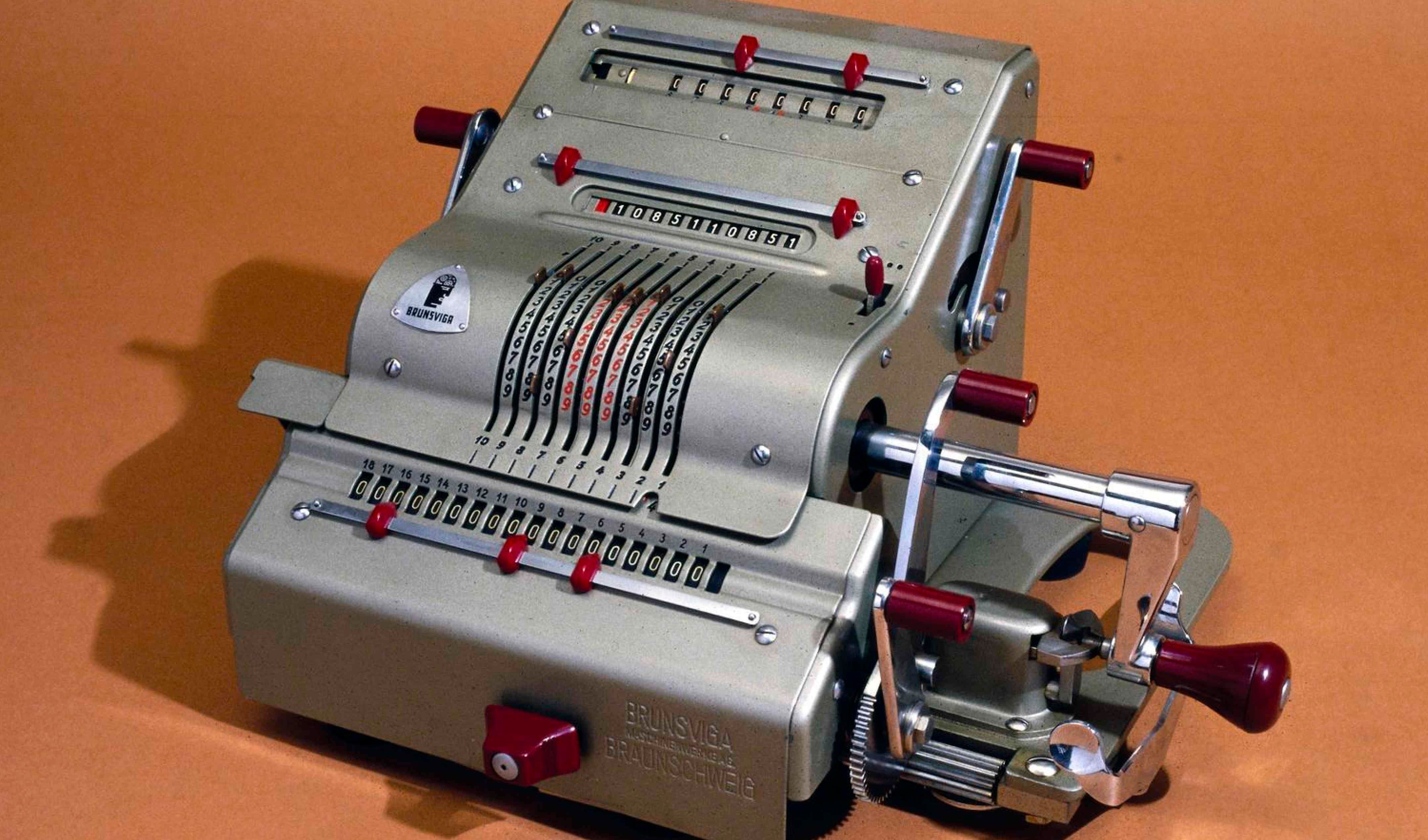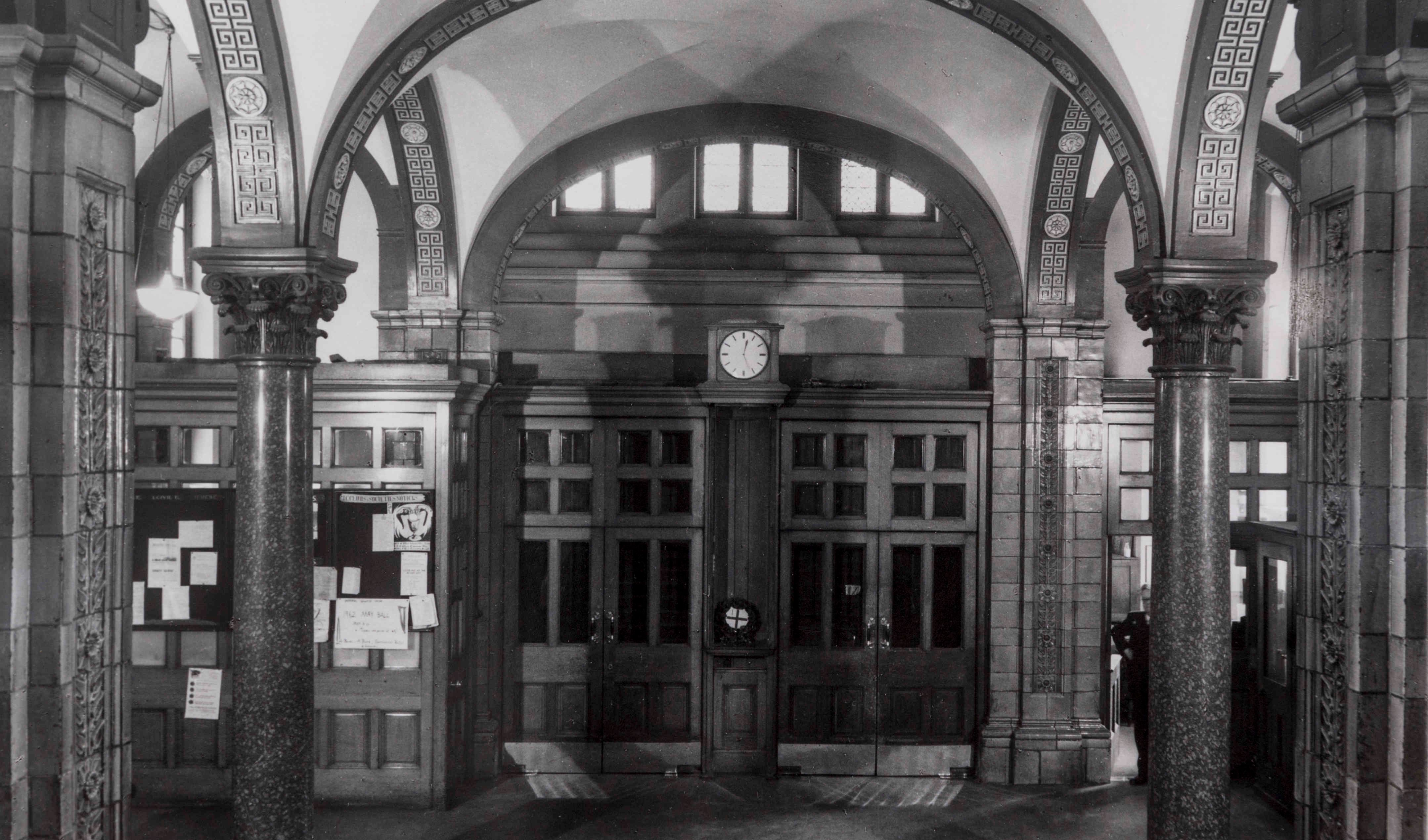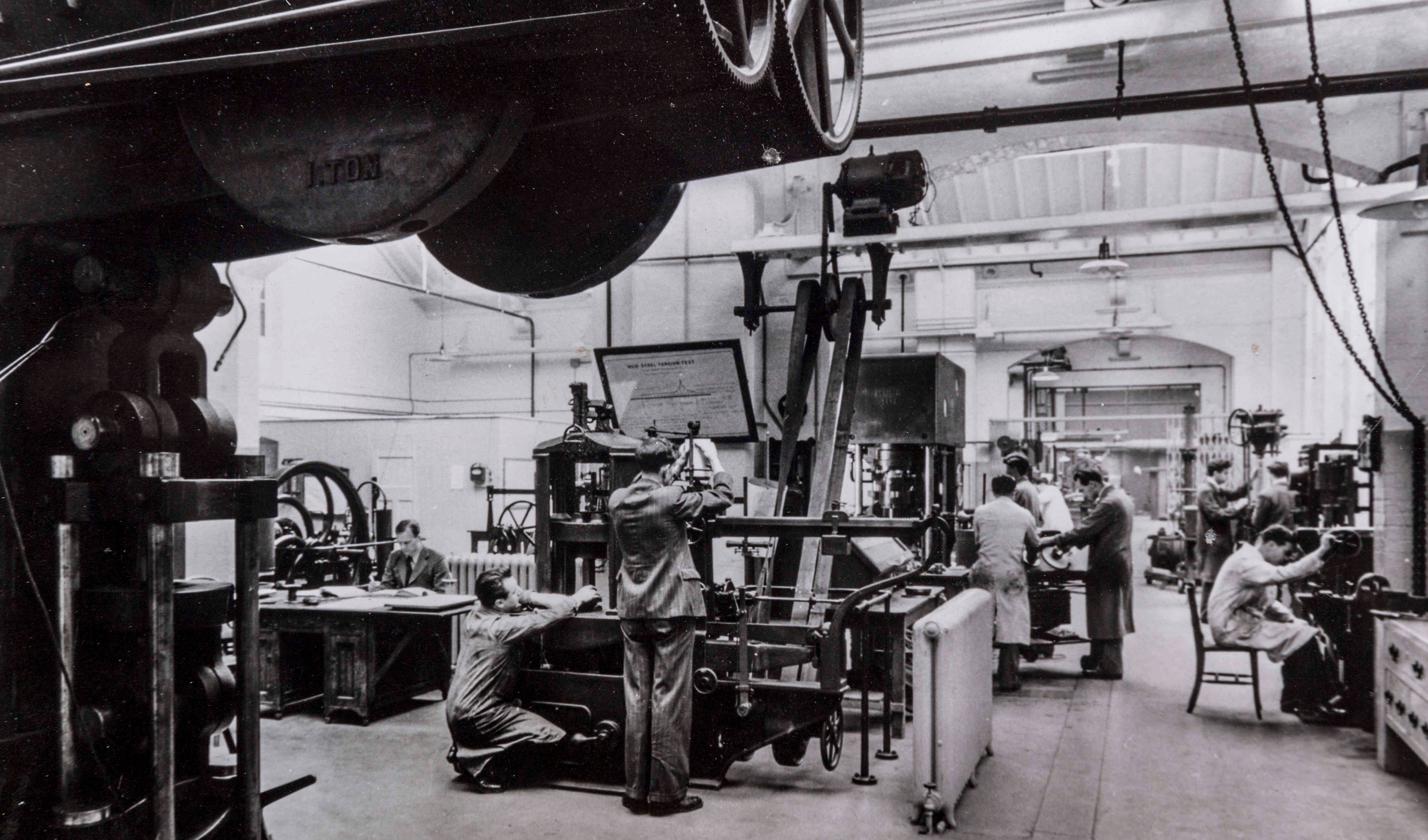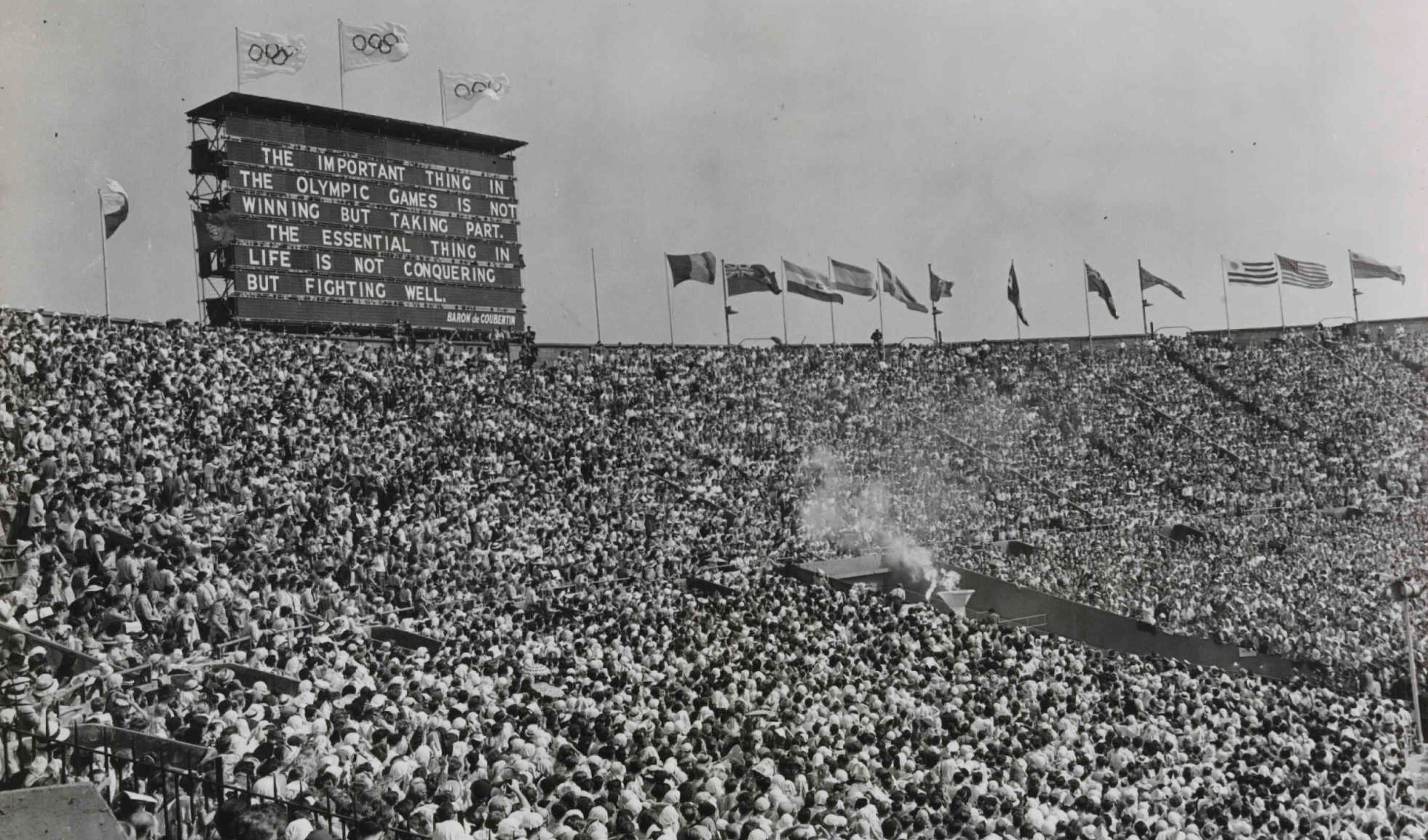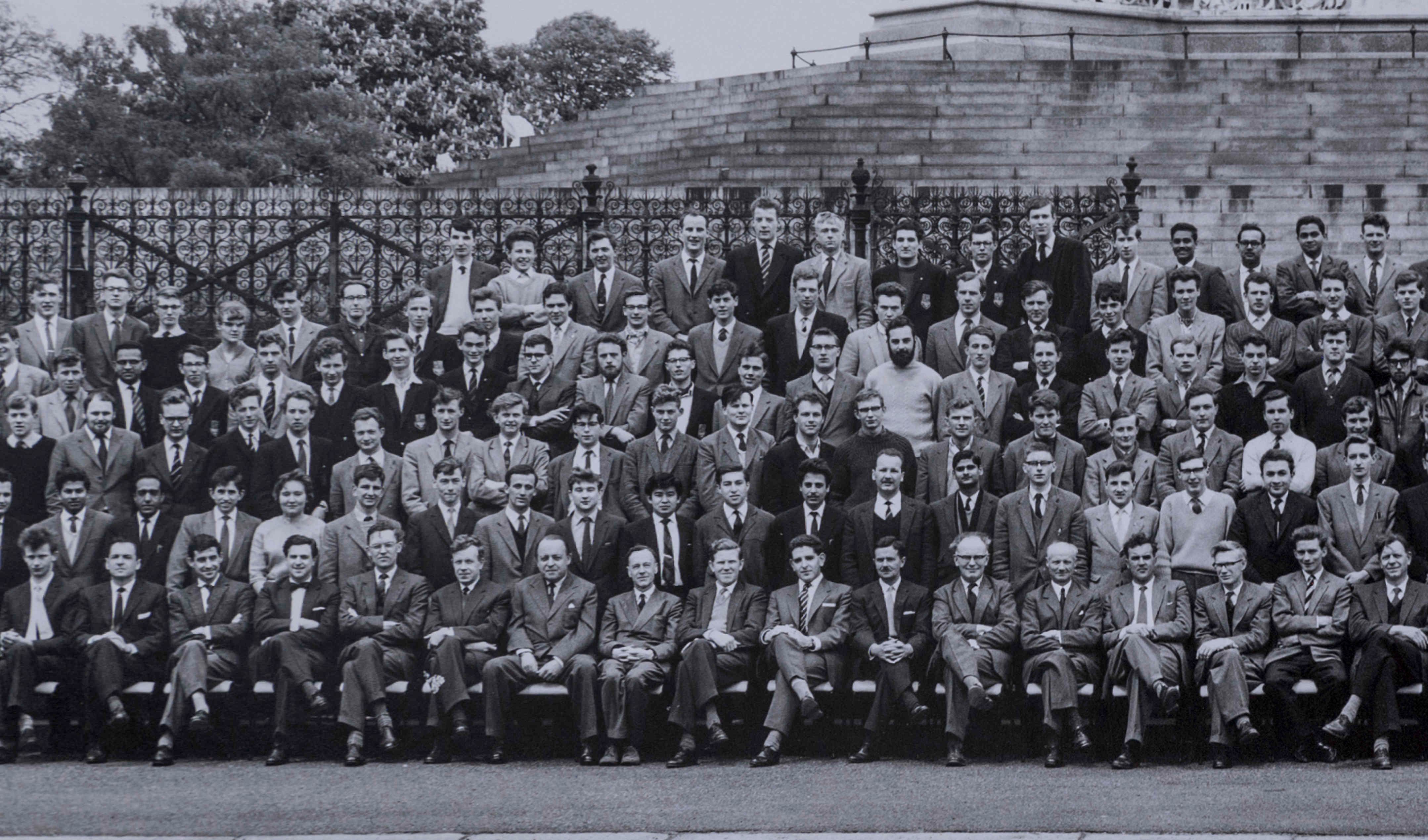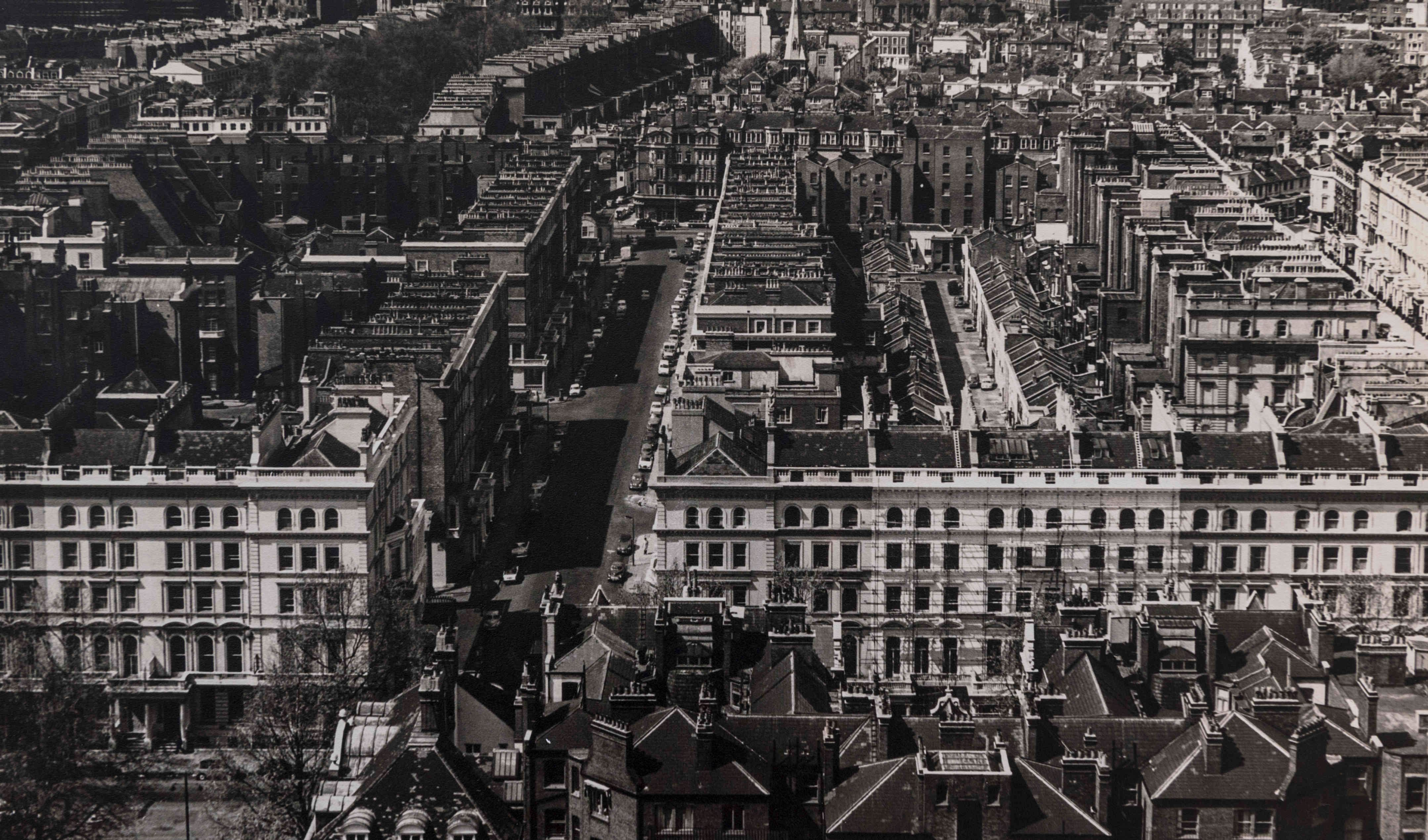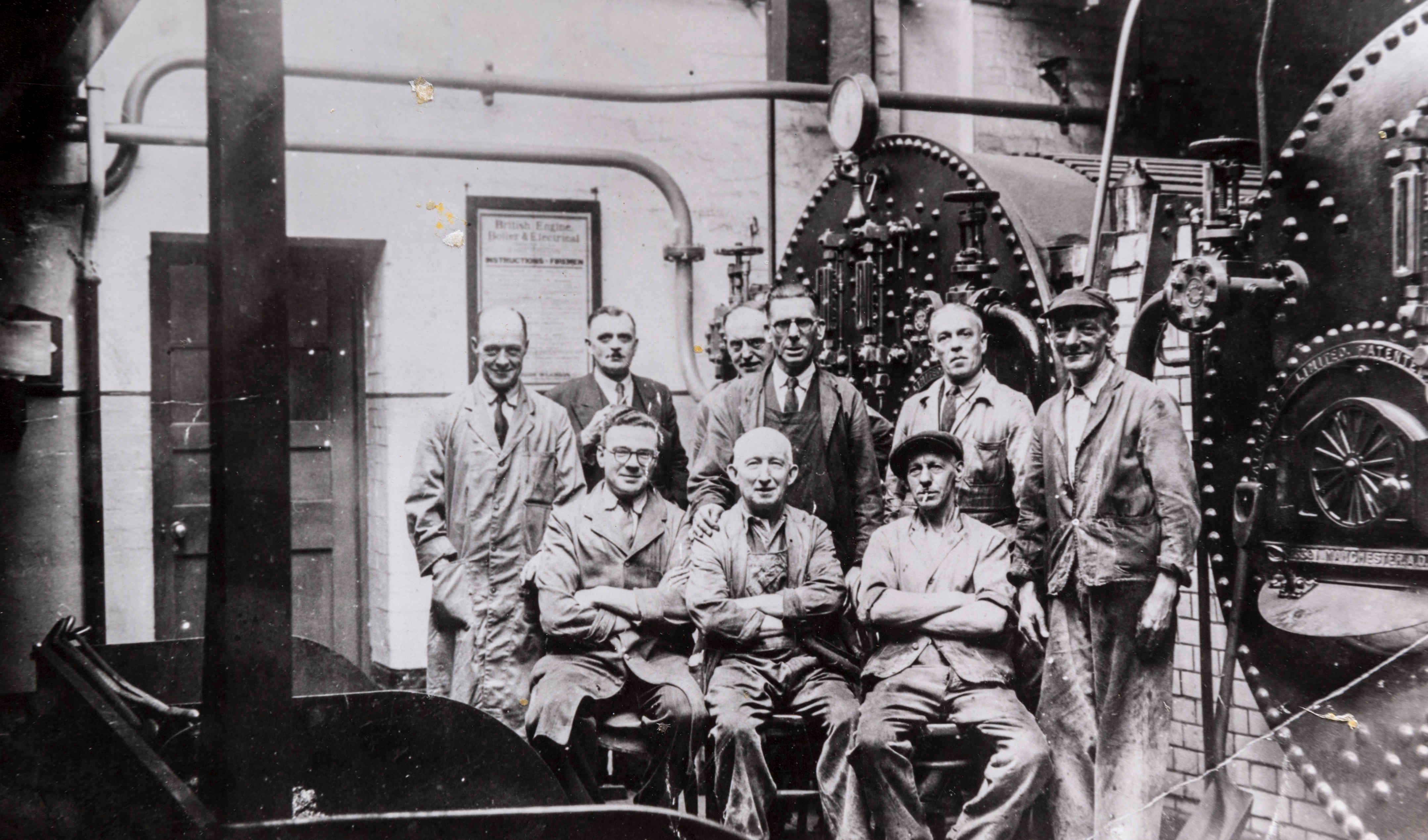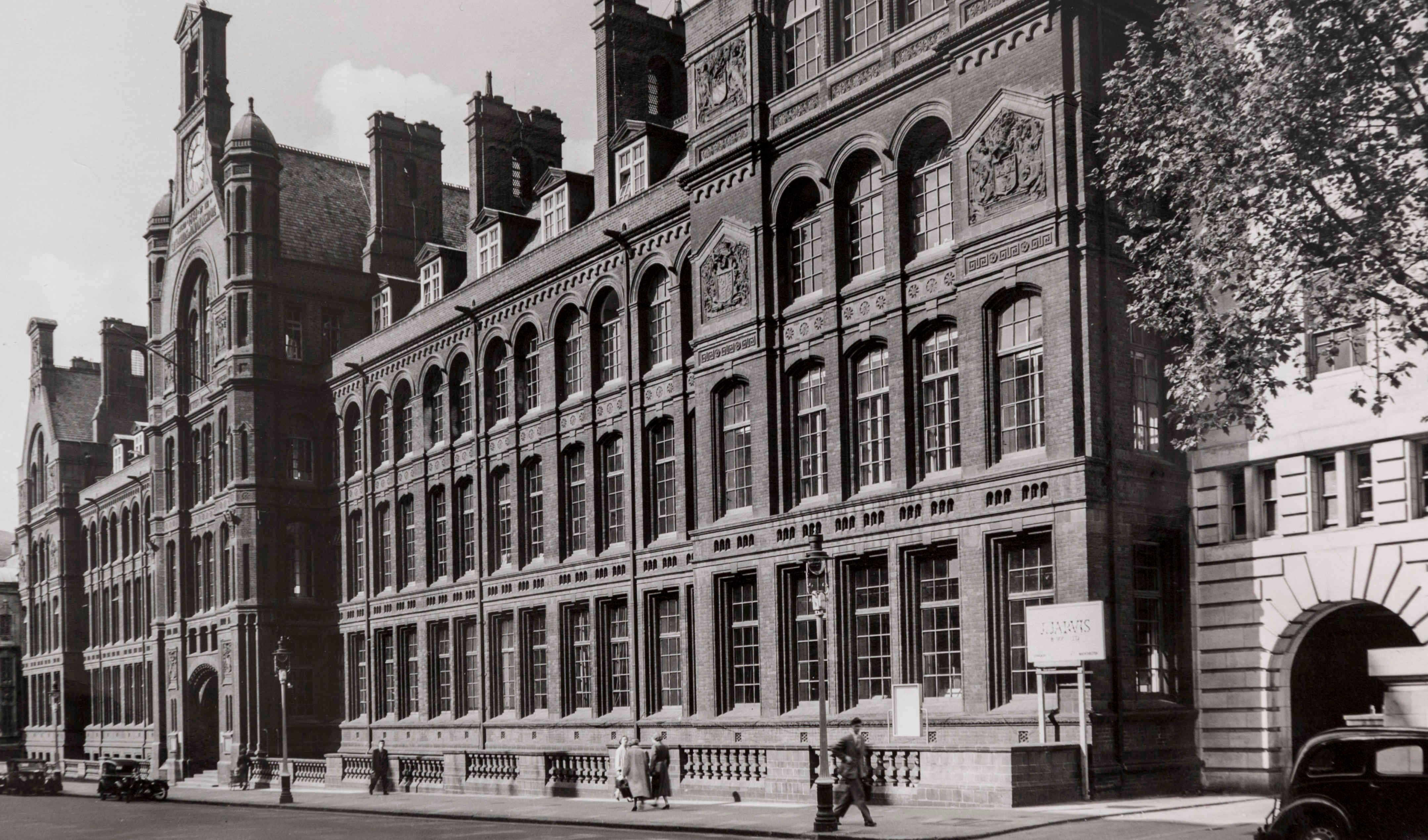1946-1966
Head of Department: Sir Owen Saunders, Head of Mechanical Engineering 1946-1966, FRS, President of IMechE, Pro-Rector and Acting Rector of Imperial College, knighted in 1965
Teaching
Students who had joined the war effort returned to continue their studies, their weekly “problem sheets” having been retained. Postgraduate courses in Production Engineering, Applied Mechanics, Gas Turbine Engineering and Industrial Design Engineering (in collaboration with the Royal College of Art) were established. A course in Operational Research/Management Science was launched, which eventually evolved into the Imperial College Business School. The personal tutorial system was introduced in 1955.
By 1965, the final phase of replacing the Victorian Waterhouse building was complete. The new Mechanical Engineering building included a “magnificent” lecture theatre seating 342 (now LT 200) and concourse.
Research
The aftermath of World War II saw many staff from the temporarily resident University of Warsaw stay on, and the installation of equipment from German research centres, including an air compressor. Industrial contacts were established with Rolls-Royce and D. Napier & Son, focussing on the super-charging of piston engines and the development of the jet engine. In the 1950s the department comprised four sections; Thermofluids, Applied Mechanics, Management and Nuclear. Theoretical and experimental work was expanded in Vibration Engineering, Stress Analysis and the emerging field of Plasticity. The first Professor of Nuclear Power was appointed. Brunsviga calculating machines were used to solve simultaneous equations arising from research on expansion bellows. The College’s first computer, an IBM 7090/709 obtained in 1963, was located in Electrical Engineering, and used punched cards on its Fortran programme.
Meanwhile, in London...
The “Austerity” Olympics were held in London in 1948. Rationing did not completely end until 1954. Street parties were held across the capital to celebrate the coronation of Queen Elizabeth II in 1953. During the winter of 1962-1963, a car rally was held on the frozen surface of the Thames and the fountains in Trafalgar Square froze solid. The Garden Hall of Residence, on Princes Gardens, first became available to students in 1957.
Photo credits:
Science Museum Group. Brunsviga model 18 RK calculating machine. 1951-289. Science Museum Group Collection Online. Accessed April 25, 2018. Used under a Creative Commons Attribution-NonCommercial-ShareAlike 4.0 Licence.
The XIV Olympic Games opens in London, 1948. By National Media Museum UK, via Wikimedia Commons (public domain)
1962 Queen's Tower view courtesy of Emeritus Professor David Ewins
All other photos from the Imperial College London archives



